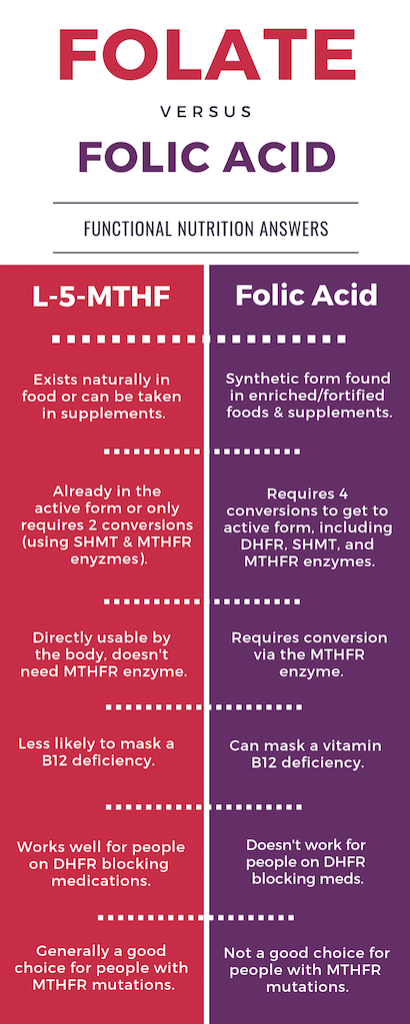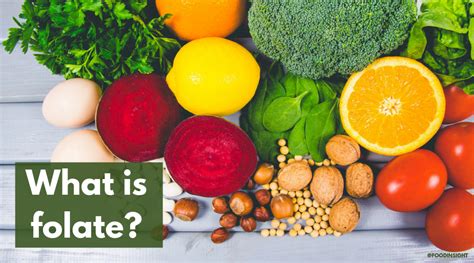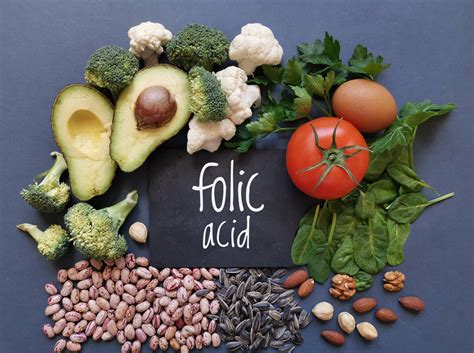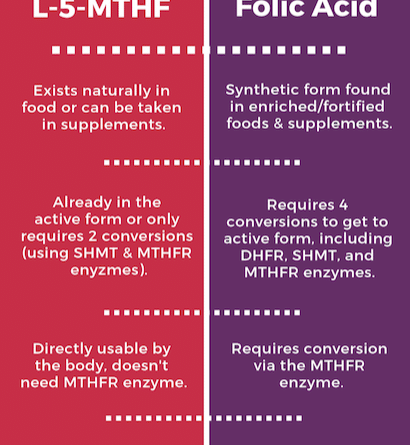Folate Vs. Folic Acid: Understanding The Difference

Folate vs. Folic Acid: Understanding the Difference
Introduction
Folate and folic acid are two forms of vitamin B9, an essential nutrient for human health. While they are often used interchangeably, there are key differences between the two that can impact their absorption and utilization in the body. This article aims to provide a comprehensive understanding of folate and folic acid, exploring their sources, differences, and implications for health.
What is Folate?
Folate is the naturally occurring form of vitamin B9 found in foods such as leafy green vegetables, legumes, fruits, and fortified grains. It is involved in various bodily functions, including:
- DNA synthesis and repair
- Red blood cell production
- Amino acid metabolism
- Neural tube development in fetuses
What is Folic Acid?
Folic acid is the synthetic form of vitamin B9 added to fortified foods and supplements. It is more stable and heat-resistant than folate, making it easier to add to processed foods. Folic acid is also used in prenatal vitamins to prevent neural tube defects in newborns.
Sources of Folate and Folic Acid
Folate:
- Leafy green vegetables (spinach, kale, romaine lettuce)
- Legumes (beans, lentils, chickpeas)
- Fruits (citrus fruits, bananas, avocados)
- Fortified grains (bread, pasta, rice)
Folic Acid:
- Fortified foods (cereals, flour, pasta)
- Supplements
- Prenatal vitamins
Absorption and Utilization
Folate:
- Folate is absorbed in the small intestine through a process called active transport.
- It is then converted into its active form, tetrahydrofolate (THF), which is used by the body.
Folic Acid:
- Folic acid is absorbed more efficiently than folate, as it does not require active transport.
- However, it must be converted into THF before it can be utilized by the body.
Differences in Absorption and Utilization
- Absorption: Folic acid is absorbed more efficiently than folate.
- Conversion: Folic acid requires conversion to THF, while folate does not.
- Bioavailability: The bioavailability of folate is higher than that of folic acid, meaning that a greater proportion of folate is absorbed and utilized by the body.
Implications for Health
Neural Tube Defects:
- Folate is essential for preventing neural tube defects (NTDs) in newborns, such as spina bifida and anencephaly.
- Folic acid supplementation during pregnancy has been shown to significantly reduce the risk of NTDs.
Cardiovascular Health:
- Folate plays a role in homocysteine metabolism, which is linked to cardiovascular disease.
- Adequate folate intake may help lower homocysteine levels and reduce the risk of heart disease.
Cognitive Function:
- Folate is involved in the production of neurotransmitters, which are essential for cognitive function.
- Some studies suggest that folate deficiency may be associated with cognitive decline and dementia.
Folate vs. Folic Acid: Which is Better?
Both folate and folic acid are important sources of vitamin B9. However, there are some advantages and disadvantages to each form:
Advantages of Folate:
- Higher bioavailability
- More efficient utilization by the body
- Naturally occurring in foods
Advantages of Folic Acid:
- More stable and heat-resistant
- Easier to add to fortified foods and supplements
- More effective in preventing neural tube defects
Recommendations
The recommended daily intake of folate for adults is 400 micrograms (mcg). Pregnant women and women who are planning to become pregnant should increase their intake to 600 mcg per day.
Most people can meet their folate needs through a balanced diet that includes folate-rich foods. However, some individuals may benefit from folic acid supplementation, such as:
- Pregnant women
- Women who are planning to become pregnant
- Individuals with malabsorption disorders
- Individuals taking certain medications that interfere with folate absorption
Conclusion
Folate and folic acid are both essential forms of vitamin B9. While they have some differences in absorption and utilization, both are important for maintaining good health. A balanced diet that includes folate-rich foods is the best way to ensure adequate intake. However, folic acid supplementation may be necessary for certain individuals, such as pregnant women and those with malabsorption disorders.
Folate vs. Folic Acid: Understanding the Difference
Folate and folic acid are two forms of vitamin B9, an essential nutrient for human health. While they are often used interchangeably, there are some key differences between the two.
Folate
Folate is the naturally occurring form of vitamin B9 found in foods such as leafy green vegetables, fruits, and beans. It is the form that the body can use directly.

Folic Acid
Folic acid is the synthetic form of vitamin B9 that is added to fortified foods and supplements. It is more stable than folate and can be stored for longer periods of time. However, the body must convert folic acid into folate before it can be used.

Key Differences
The key differences between folate and folic acid are:
- Source: Folate is found naturally in foods, while folic acid is synthetic.
- Stability: Folic acid is more stable than folate.
- Conversion: The body must convert folic acid into folate before it can be used.
Which is Better?
Both folate and folic acid are important sources of vitamin B9. However, folate is the preferred form because it is more readily available to the body. If you are not getting enough folate from your diet, you may want to consider taking a supplement.
Conclusion
Folate and folic acid are both essential nutrients for human health. While there are some key differences between the two, both forms are important for ensuring that you are getting enough vitamin B9.
